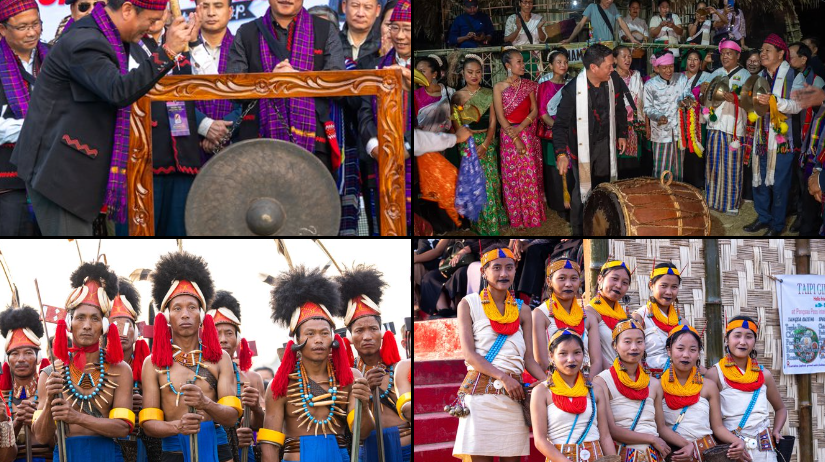The Pangsau Pass International Festival (PPIF) 2025, held in Arunachal Pradesh, celebrates the region’s cultural heritage and historical significance, especially its ties to World War II. Chief Minister Pema Khandu has announced plans to boost tourism by restoring World War II remnants in Nampong, highlighting the festival’s role in economic growth and cultural exchange. This year’s festival is particularly special as it coincides with the 80th anniversary of World War II’s conclusion.
Key Facts about Pangsau Pass
Location and Altitude
- Pangsau Pass (also known as Pan Saung Pass) is located on the India-Myanmar border at an altitude of 3,727 feet (1,136 meters).
- It lies on the crest of the Patkai Hills and is part of the historic Ledo Road (Stilwell Road).
- The pass is named after Pangsau, a Myanmar village situated 2 km east of the pass.
Geographical Importance
- The pass serves as one of the easiest routes from the Assam plains into Myanmar.
- Chaukan Pass, India’s easternmost point, lies northeast of Pangsau Pass in Arunachal Pradesh’s Changlang district.
Historical Significance
Ancient and British Era
- 13th Century: The pass was used by the Ahoms, a Shan tribe, to enter Assam.
- British Era:
- Surveyed for a potential railway route connecting India to Myitkyina (Burma) through the Hukawng Valley, though the railway was never constructed.
- British engineers explored the Patkai Range for building a road connecting Assam to northern Burma.
World War II
- The Stilwell Road (Ledo Road) was constructed to connect British India with Nationalist China, aiding their efforts against Japanese forces.
- Pangsau Pass, often called “Hell Pass”, posed significant challenges due to steep gradients and muddy terrain.
- The road connected Ledo (Assam) to Pangsau Pass over a distance of 61 km (38 miles).
Pangsau Pass International Festival
The festival has been celebrated annually since 2007 in Nampong, Arunachal Pradesh, during the third week of January. It is a key event promoting cultural exchange between Northeast India and Myanmar.
Key Attractions
- Cultural Performances: Folk dances such as Bihu, Bamboo dance, and Tangsa Rongrand War dance.
- Showcasing Traditions: Arts, crafts, ethnic foods, and traditional sports highlight the rich culture of the Tangsa Naga tribe and other local communities.
- Cross-Border Exchange: Visitors are allowed to cross into Myanmar without passports, fostering community ties and trade.
International Participation
- A 150-member delegation from Myanmar attended this year’s festival, promoting cross-border cooperation and shared cultural heritage.
Historical Sites and Tourism Development
World War II Cemetery
- The Jairampur Cemetery, discovered by the Assam Rifles in the 1990s, is India’s largest World War II cemetery, covering three acres with over 1,000 graves.
- A war tank has been installed at the entrance, symbolizing the region’s wartime legacy.
Tourism Boost
- The Arunachal Pradesh government plans to restore war remnants and improve infrastructure in the Tirap, Changlang, and Longding districts to attract tourists.
Memorialisation Efforts
- Sites like the Stilwell Road and Lake of No Return, both significant to World War II, are being promoted to enhance historical awareness.
Significance of the Festival
The Pangsau Pass International Festival highlights the region’s vibrant culture, wartime legacy, and geographical importance. By fostering tourism, cross-border cultural exchanges, and remembrance of historical events, the festival plays a crucial role in strengthening ties within the community and beyond.
Also Read: From Popular App to Security Threat: Why TikTok Faces an Uncertain Future
Disclaimer
This article is for educational purposes, focusing on the relevance of the topic for UPSC aspirants. Students should stay updated on further developments and refer to official sources for comprehensive preparation.
Follow Fusion IAS

